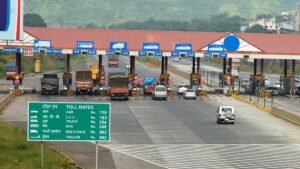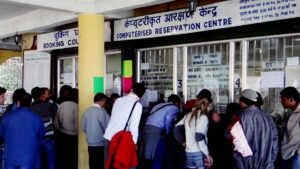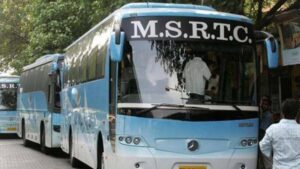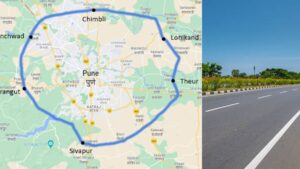Overcrowding at Airports in India makes flying a nightmare and its going to get worse! A wake up call
India’s aviation landscape is on the verge of an unparalleled transformation, buoyed by rapid growth in passenger volume, an expanding aircraft fleet, and an ambitious plan to augment its airport infrastructure. However, this impressive growth trajectory is not without its challenges, particularly the looming issue of overcrowding at airports, a growing concern that could dampen the country’s aviation boom if not addressed promptly and efficiently.
The Blueprint for Expansion
At the heart of India’s aviation expansion is a government-led initiative, earmarking around $11 billion (€10.22 billion) for the construction of new airports and the refurbishment of existing ones. The ambitious goal is to increase the number of operational airports from 150 to approximately 200 within the next five years. This expansion is crucial as India, home to 1.4 billion people, is expected to become the world’s third-largest aviation market, trailing only China and the United States.
India’s domestic air passenger traffic is forecasted to double by the end of 2030, reaching an astounding 300 million passengers, as per Civil Aviation Minister Jyotiraditya Scindia. However with the current infrastructure and processes, this growth will be more a nightmare than an achievement. Even at the current passenger count, air travel in India is far from convenient. Imagine what will happen when the passenger numbers double and the infrastructure does not catch up?
This projection underscores the urgent need for robust infrastructure to accommodate the burgeoning demand for air travel, which is poised to place India on the global aviation map.
The Crux of Overcrowding in Indian Airports
Indian airports are grappling with significant overcrowding issues, fueled by various factors that compromise the travel experience:
- Aircraft Shortage: A pronounced scarcity of airplanes exacerbates overcrowding as airlines are compelled to utilize their fleets continuously without sufficient breaks. This, coupled with necessary maintenance downtimes, leads to frequent delays and cancellations. When aircraft are withdrawn for service, it triggers operational disruptions akin to a domino effect.
- Rising Passenger Volume: The number of passengers flying has surged remarkably, with over 152 million travelers recorded last year, marking a 23% increase from the previous year. This escalating demand has naturally driven up ticket prices, evidenced by a 30% fare increase during the peak summer vacation season.
- Baggage Handling Inefficiencies: The inconvenience caused by delayed baggage handling at major airports has not gone unnoticed. The Aviation Ministry’s comprehensive audit across six major airports and seven airlines, encompassing 3600 flights, revealed significant delays, with passengers waiting nearly an hour for baggage. In response, new directives have been issued to streamline baggage delivery. Airlines are now mandated to deliver the first bag within 10 minutes of engine shutdown and the last bag within 30 minutes, aiming to enhance the travel experience by reducing wait times at baggage claims.
- Inefficient Security Screening: The security check process at Indian airports is notoriously slow and confusing, with constantly changing guidelines and inadequate security check counters, contributing to travelers’ frustration.
- Aerobridge Boarding Limitations: The practice of boarding large aircraft, such as the A321 Neo, through a single aerobridge results in lengthy queues. Historically, boarding included both front and aft doors, a process that could be replicated with aerobridges if airports and airlines invest in additional infrastructure, a common practice in more developed countries.
- Lack of Parking and Accessibility: Many Indian airports do not offer adequate parking or convenient drop-off and pick-up areas, forcing passengers to carry their luggage over long distances to access their vehicles.
- Airlines’ Indifference to Customer Experience: The prevailing attitude among airlines in India is to view passengers merely as numbers, with little emphasis on customer support. This indifference stems partly from the high stress levels experienced by airline staff and a market dynamic where demand consistently outstrips supply.
Strategic Measures and Long-Term Planning
Recognizing these challenges, India is taking proactive steps to mitigate overcrowding and enhance operational efficiency. The country is set to become the world’s largest aircraft purchaser, with a fleet size expected to grow from 713 to over 2,000 in the next decade. Orders for 970 aircraft have already been placed in 2023, signaling a determined effort to match capacity with the soaring demand for air travel.
To complement this fleet expansion, significant investments are being made in airport infrastructure, with a focus on creating capacities, eliminating bottlenecks, and simplifying procedures. Civil Aviation Minister Scindia emphasizes the sector’s potential to support India’s projected $20 trillion economy by 2047, the nation’s centennial year of independence.
Ensuring a Sustainable Growth Trajectory
Despite these optimistic developments, experts like Kapil Kaul, CEO and director of the CAPA Center for Aviation, caution that India must also strengthen its safety, security, skills, airspace architecture, and institutional infrastructure to manage this growth sustainably. Minor operational challenges, such as fog-induced delays and regulatory enforcement, need robust mechanisms to ensure reliability and efficiency in the aviation sector.
As India positions itself as a pivotal player in the 21st-century aviation market, the focus on dual-use of airstrips, upgrading aviation academies, and fostering a skilled workforce will be critical in realizing its aviation potential. The strategic expansion and modernization of the aviation sector are not just about meeting the current demand but preparing for the future, making India’s skies more accessible, efficient, and most importantly, capable of handling the anticipated surge in air travel without succumbing to the pressures of overcrowding at airports.







